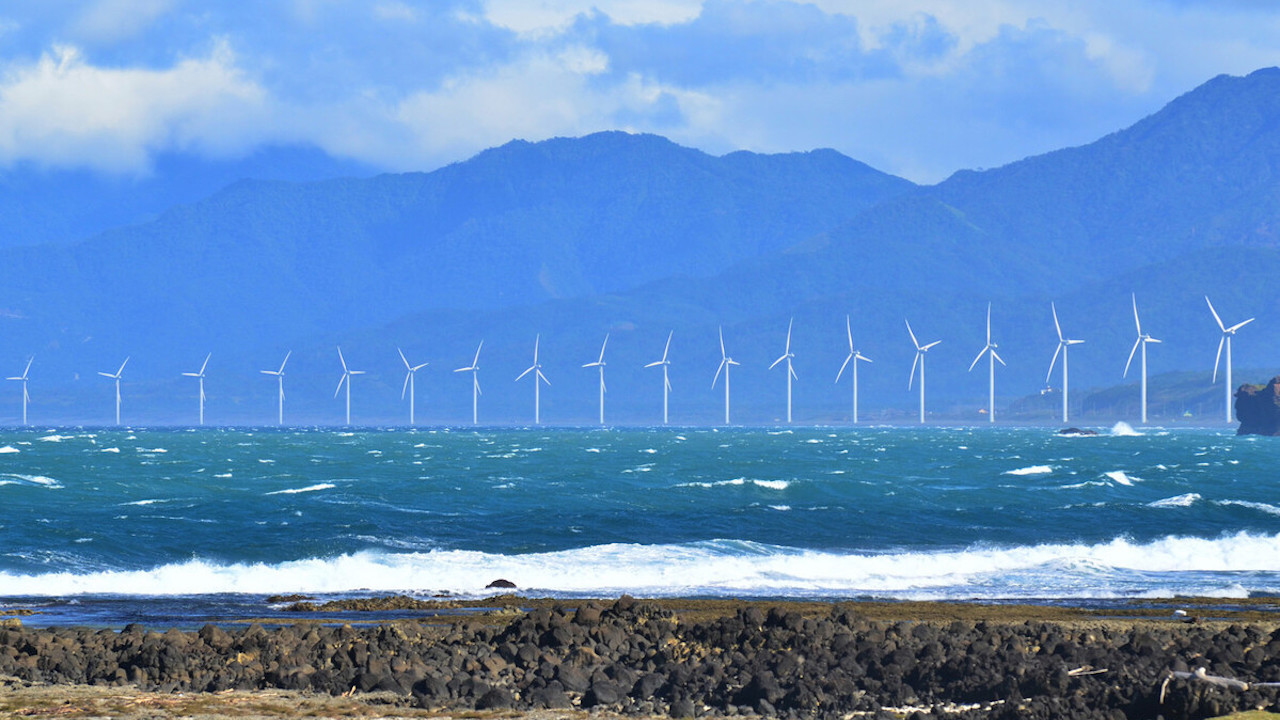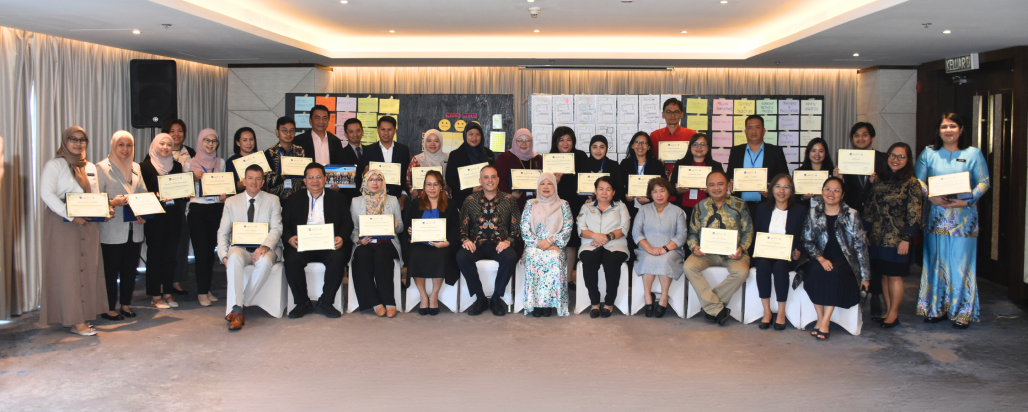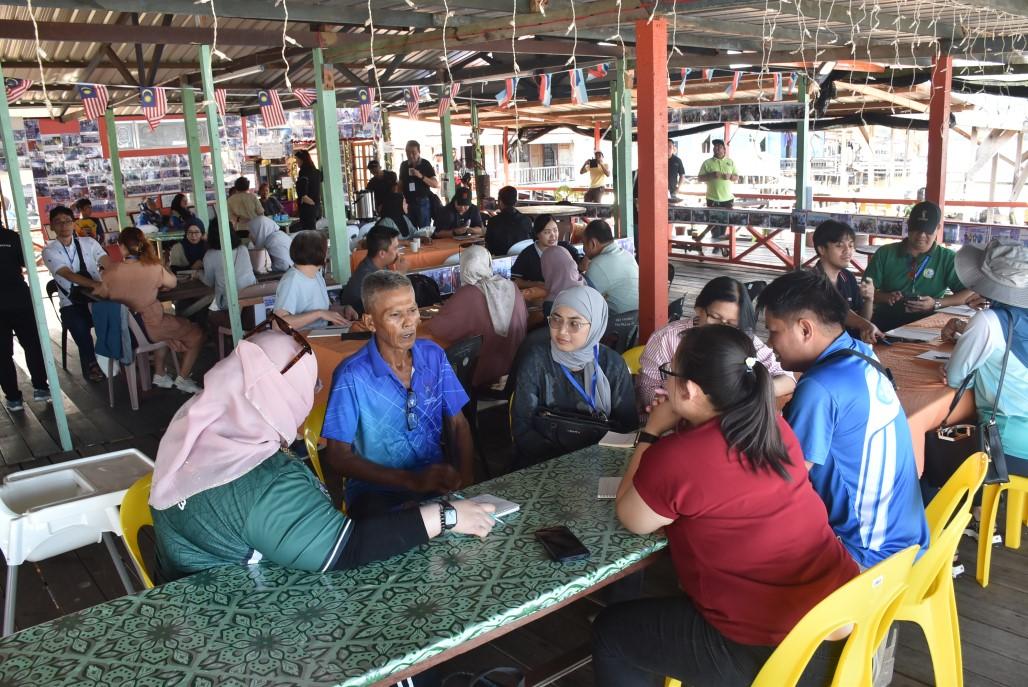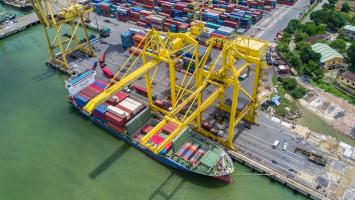
Developing the blue economy in Southeast Asia is expected to boost the growth of fisheries, aquaculture, and tourism, and promote investments in emerging sectors, such as renewable energy, biotechnology, and marine and freshwater-based research and education. Photo credit: ADB.
Southeast Asian countries lay the groundwork for the sustainable use of ocean and coastal resources in the region.
Two subregions in Southeast Asia are working together to harness the untapped wealth of their ocean and coastal resources. The Brunei Darussalam–Indonesia–Malaysia–Philippines East ASEAN Growth Area (BIMP-EAGA) and Indonesia–Malaysia–Thailand Growth Triangle (IMT-GT) are developing a joint blue economy strategy with the support of the Asian Development Bank (ADB).
A 5-day “Fostering Coastal Resilience and the Blue Economy” workshop for environment practitioners and planners from BIMP-EAGA and IMT-GT member countries was held in November in Kota Kinabalu, the capital of Malaysia’s Sabah state. The activity aimed to assist the countries in creating an enabling environment for medium- and long-term initiatives to implement the joint BIMP-EAGA and IMT-GT Blue Economy Strategy 2030 and attract investments to support these initiatives.
The Partnerships in Environmental Management for the Seas of East Asia (PEMSEA) estimates the value of ecosystem services in the region at around $2 trillion, while blue carbon value is at $68 billion for mangroves and $40 billion for seagrass. These make East Asia, including Southeast Asia, a globally important region. It is a center of economic growth and marine biodiversity. Millions of people depend on the ocean economy for their food and livelihood. The bulk of global fish and aquaculture production come from the region.
Indonesia, the Philippines, and Malaysia belong to the Coral Triangle, which has 76% of all known coral species in the world and 37% of the world’s total coral reef fish. Along with Thailand, these countries are also among the top producers in the fishery sector.
However, the region faces many challenges, including climate change, pollution, biodiversity loss, and overfishing.
In his welcome remarks at the workshop, Permanent Secretary to the Ministry of Tourism, Culture and Environment Sabah Datuk Sr. Haji Mohd Yusrie Abdullah cited the case of Sabah, which has large coastal communities that depend on the sea for their livelihood. These communities are vulnerable to climate change impacts, such as coastal erosion. Improving coastal resilience and developing a blue economy can help local communities maintain a sustainable livelihood.

Strategic framework
The Association of Southeast Asian Nations (ASEAN) sees ocean and seas as key drivers of economic growth and innovation as well as recognizes the need to ensure ocean sustainability.
In October 2021, ASEAN leaders agreed to explore cooperation on the blue economy in such areas as marine environmental protection, illegal fishing, ecosystems protection, sustainable aquaculture and fishing practices, sustainable production and consumption, biotechnology, marine industrial development, marine and plastic pollution, food security, trade, coastal tourism and heritage conservation, maritime transport, security and safety of navigation, marine science, ocean energy, sea and ocean governance and management, and statistics and data analytics, as well as capacity-building, digitization, and innovation.
Last September, the 43rd ASEAN Summit in Jakarta, Indonesia adopted the ASEAN Blue Economy Framework, which envisions the blue economy as “a new engine for growth that is socially, economically, and environmentally sustainable.” The ASEAN leaders said the framework provides “an integrated, cross-sectoral and cross-stakeholder approach that creates value-added and value-chain of resources from oceans, seas, and fresh water in an inclusive and sustainable way.”
The ASEAN Blue Economy will serve as “an accelerator of the conventional marine sector, such as fisheries, aquaculture, fish-only processing, and tourism, and a catalyst for emerging sectors, such as renewable energy, biotechnology, and marine and freshwater-based research and education.”
Subregional cooperation
As subregions of ASEAN, BIMP-EAGA and IMT-GT are developing a blue economy strategy that is aligned with the regional vision and sustainability goals.
At the opening of the workshop in Kota Kinabalu, Melody F. Ovenden, senior environment specialist at ADB, noted that both subregions have added the blue economy in their post-pandemic development strategy.
The midterm review report of BIMP-EAGA’s Vision 2025 highlights the need to integrate green and blue approaches into infrastructure development, enhance climate resilience, promote resource efficiency and participatory planning, develop smart and green cities, adopt circular economy approaches, and mainstream sustainable and environmental components in development projects.
The IMT-GT Blueprint 2022–2026 emphasizes adopting a green, blue, and circular economy to facilitate a stronger recovery from the COVID-19 pandemic. This approach intends to accelerate member counties’ commitments to decarbonize their economies, reduce biodiversity loss, open new markets, unlock investment opportunities including in the blue economy, and create green and blue jobs, among others.
“The scale of work ahead requires strong partnerships,” said Ovenden. “ADB as regional development advisor to BIMP-EAGA and regional development partner to IMT-GT can play a pivotal role as the ‘climate change bank’ in Asia and the Pacific, and can offer significant support in helping build healthy ocean economies through blue investments in the region.”
For example, ADB can help BIMP-EAGA and IMT-GT countries develop healthy ocean investments in the areas of marine aquaculture, reefs, renewable energy, and ecotourism for ecosystem services.

Knowledge sharing and collaboration
The workshop was organized under the Building Coastal Resilience through Nature-Based and Integrated Solution project and the BIMP-EAGA, IMT-GT, and GMS Capacity Building Program (B-I-G Program), which is part of an ADB project that supports regional cooperation and integration. The activity was a collaboration among various entities, including the BIMP-EAGA Facilitation Center, the BIMP-EAGA Environment Cluster, the Centre for IMT-GT Subregional Cooperation, the IMT-GT Working Group on Environment, and the Ministry of Tourism, Culture, and Environment Sabah (KePKAS), Malaysia.
The workshop, which was delivered by a team of experts with extensive knowledge and experience in coastal resilience, nature-based integrated solutions and blue economy, offered a platform for environment policy makers, planners, and practitioners to share knowledge and experience and collaboratively learn from each other and develop a network. They discussed strategies and global examples of good practices in coastal resilience and nature-based integrated solutions. The ultimate goal of the workshop was to identify key actions and measures to implement the joint blue economy strategy.
Workshop participants also visited the Sinar Lentuong Oyster Farm, one of the small-scale aquaculture farms that have received assistance from the Department of Fisheries Sabah. The farm uses community-based sustainable oyster farming methods and provides alternative livelihoods to fishermen.
This article was first published by BIMP-EAGA on 22 November 2023.

BIMP-EAGA
The Brunei Darussalam–Indonesia–Malaysia–Philippines East ASEAN Growth Area, or BIMP-EAGA, is a cooperation initiative established in 1994 to spur development in remote and less developed areas in the four participating Southeast Asian countries.
